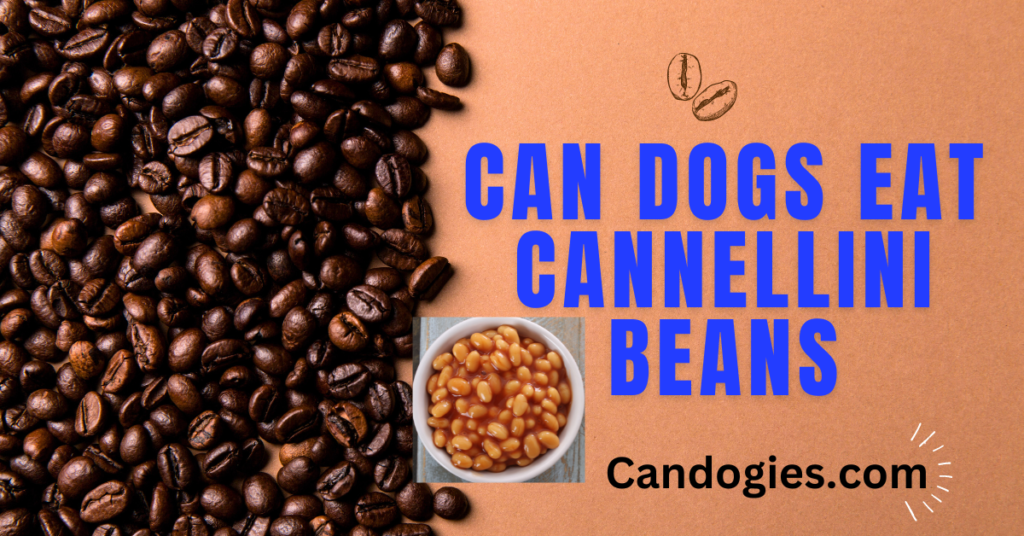The Truth About Dogs Pita Bread: Can They Eat It?
As pet owners, we strive to provide our furry friends a healthy and balanced diet. However, it’s not common for dogs to show interest in human foods, such as pita bread. Whether it’s a piece that fell on the floor or a kind gesture to share, it’s important to understand if pita bread is safe for dogs to consume.
Pita bread is a popular bread originating from the Mediterranean and Middle Eastern regions. It’s typically made from flour, water, salt, and yeast and can be served as a sandwich or as a dip with hummus. While it’s a staple in many human diets, the question remains: can dogs safely eat pita bread?
In this article, we will explore the truth about dogs and pita bread, including the potential nutritional benefits and risks. We will also examine whether pita bread can be a healthy addition to a dog’s diet or should be avoided altogether.
As with any human food, it’s essential to understand the potential risks associated with feeding it to our pets. Some human foods can be toxic to dogs and cause digestive upset, organ damage, or even death. Therefore, it’s crucial to do our research and understand the effects of human food on our furry friends.
So, can dogs eat pita bread? Let’s find out the truth about dogs and pita bread.
Can Dogs Eat Pita Bread? Step-by-Step Guide
Here we are going to discuss 5 major topics which you must need to know:
- What is Pita Bread?
- Can Dogs Eat Pita Bread?
- Is Pita Bread Safe for Dogs?
- When Is Pita Bread Dangerous For Dogs?
- What Happens if dog Eats Too Much Pita?
What is Pita Bread?
Pita bread is a flatbread that has been enjoyed for thousands of years. It originated in the Mediterranean and Middle Eastern regions and is a staple in many cultures’ diets. Pita bread is made from flour, water, salt, and yeast and is typically baked at high temperatures, causing the bread to puff up and form a pocket in the centre. This pocket makes pita bread a popular sandwich choice or as a dip with hummus.
Pita bread can come in various shapes and sizes, but it’s typically round and has a diameter of six to eight inches. It’s often sold pre-packaged in grocery stores or can be found freshly baked in local bakeries or markets.
Pita bread can be enjoyed on its own or as part of a meal. It’s a versatile food filled with various ingredients, such as meats, vegetables, or spreads. It’s also a source of carbohydrates, which provide energy for the body. While pita bread is a widespread human food, pet owners may wonder if it’s safe for their dogs to consume.
Can Dogs Eat Pita Bread?
Yes, dogs can eat pita bread in moderation, but it’s important to consider a few things before adding it to their diet.
Firstly, pita bread is not nutritionally necessary for dogs, and they can get all the nutrients they need from their regular dog food. However, if you give your dog a small piece of pita bread, make sure it’s plain without any added ingredients like garlic or onions, which can be toxic to dogs.
Additionally, pita bread contains carbohydrates, which are a source of energy. However, dogs’ bodies process carbohydrates differently than humans, and a diet too high in carbohydrates can lead to obesity and other health problems. Therefore, it’s best to offer pita bread in moderation and as an occasional treat.
It’s also essential to consider the potential digestive issues that pita bread can cause. The high gluten content in pita bread can cause digestive upset in dogs who are sensitive to it. Furthermore, the yeast in pita bread can cause bloating, gas, and discomfort in some dogs. If your dog experiences digestive issues after consuming pita bread, it’s best to avoid it altogether.
Is Pita Bread Safe for Dogs?
Pita bread can be safe for dogs to eat in moderation, but it’s important to consider a few things before adding it to their diet.
Firstly, make sure the pita bread is plain without any added ingredients that can be toxic to dogs, such as garlic or onions. Also, make sure to avoid pita bread that contains added sugar or other elements that can be harmful to dogs.
Secondly, while pita bread can provide dogs with some carbohydrates and energy, it’s important to remember that dogs have different nutritional requirements than humans. A diet that’s too high in carbohydrates can lead to obesity and other health problems in dogs. Therefore, it’s best to offer pita bread in moderation and as an occasional treat.
Finally, it’s important to consider any potential digestive issues that pita bread can cause. Some dogs may have sensitivity to gluten, which is a protein found in wheat and other grains, including those used to make pita bread. Gluten sensitivity can lead to digestive upset, including diarrhoea, vomiting, and abdominal pain. Additionally, the yeast in pita bread can cause bloating, gas, and discomfort in some dogs.
In conclusion, while pita bread can be safe for dogs to eat in moderation, it’s important to consider the potential risks and benefits. It’s best to stick to a balanced and nutritious diet formulated for your dog’s specific needs and avoid feeding them foods that can cause digestive upset or other health problems. If you have any concerns about feeding pita bread to your dog, it’s always best to consult your veterinarian.
When Is Pita Bread Dangerous For Dogs?
Pita bread can be dangerous for dogs when it contains certain ingredients or is consumed in large amounts. Here are some situations where pita bread can be dangerous for dogs:
When it contains toxic ingredients:
Pita bread that contains harmful ingredients such as garlic or onions can be dangerous for dogs. These ingredients can cause damage to dogs’ red blood cells and lead to anaemia. Additionally, pita bread that contains added sugar, salt, or artificial sweeteners can also be harmful to dogs.
When it’s high in carbohydrates:
While pita bread can provide dogs with some carbohydrates and energy, it’s important to remember that dogs have different nutritional requirements than humans. A diet that’s too high in carbohydrates can lead to obesity and other health problems in dogs.
When it causes digestive issues:
Some dogs may have sensitivity to gluten, which is a protein found in wheat and other grains, including those used to make pita bread. Gluten sensitivity can lead to digestive upset, including diarrhoea, vomiting, and abdominal pain. Additionally, the yeast in pita bread can cause bloating, gas, and discomfort in some dogs.
When consumed in large amounts:
Pita bread is a high-calorie food, and drinking too much can lead to weight gain and other health problems. Additionally, if a dog eats too much pita bread too quickly, it can lead to choking or gastrointestinal obstruction.
While pita bread can be safe for dogs to eat in moderation, it’s important to be aware of the potential risks and dangers. It’s best to stick to a balanced and nutritious diet formulated for your dog’s specific needs and avoid feeding them foods that can cause digestive upset or other health problems. If you have any concerns about feeding pita bread to your dog, it’s always best to consult your veterinarian.
What Happens if dog Eats Too Much Pita?
Dogs can eat pita bread in moderation without any severe consequences, but if they consume too much of it, they may experience digestive issues. Pita bread is made from wheat flour, which can be difficult for some dogs to digest.
If a dog overeats pita bread, it may experience symptoms such as bloating, diarrhoea, vomiting, and abdominal pain. In severe cases, the dog may also develop pancreatitis, a condition where the pancreas becomes inflamed and can lead to more severe health issues.
To avoid these problems, it’s best to limit your dog’s consumption of pita bread and any other foods that contain wheat flour. If your dog has already overeaten pita bread and is showing symptoms of digestive distress, it’s important to monitor them closely and contact your veterinarian if the symptoms persist or worsen.
Conclusion: The Truth About Dogs Pita Bread: Can They Eat It?
Dogs can eat pita bread in moderation, but it should not be a significant part of their diet. Pita bread is made from wheat flour. Which can be challenging for some dogs to digest and may cause digestive issues such as bloating, diarrhoea, vomiting, and abdominal pain. Additionally, pita bread often contains seasonings or fillings that may not be suitable for dogs. So it’s important to check the ingredients before giving them to your pet. If your dog has overeaten pita bread and is experiencing symptoms of digestive distress. You should monitor them closely and contact your veterinarian if the symptoms persist or worsen. As with any food, it’s important to feed pita bread to your dog in moderation and as part of a balanced diet.
FAQ’s
Dogs should not eat bread that contains ingredients that are toxic to them, such as garlic, onions, raisins, or chocolate. Additionally, bread that is high in sugar, salt, or fat can also be harmful to dogs. It’s best to give dogs plain bread in moderation and to avoid any bread that contains harmful ingredients.
While plain pita bread is safe for dogs to eat in moderation, pita chips and hummus should generally be avoided. Pita chips are often high in salt and fat, leading to obesity and other health issues in dogs. Hummus, however, usually contains ingredients like garlic and onions that can be toxic to dogs. It’s best to stick to plain, unseasoned pita bread as a treat for your dog.
Pita bread can be eaten in various ways, such as splitting it in half and stuffing it with fillings, cutting it into wedges and serving it with dips, or toasting it as a base for pizza or flatbreads.
Pita bread can be a healthy option when consumed in moderation and as part of a balanced diet. It is a good source of carbohydrates, protein, and fibre and is typically low in fat.
Pita bread can be a healthy option when consumed in moderation, as it is a good source of carbohydrates, protein, and fibre and is typically low in fat. However, the nutritional value of pita bread can vary depending on the type and brand, as some may contain added sugars, salt, and preservatives. Additionally, people with gluten intolerance or celiac disease should avoid pita bread as it is made from wheat flour.








One Comment